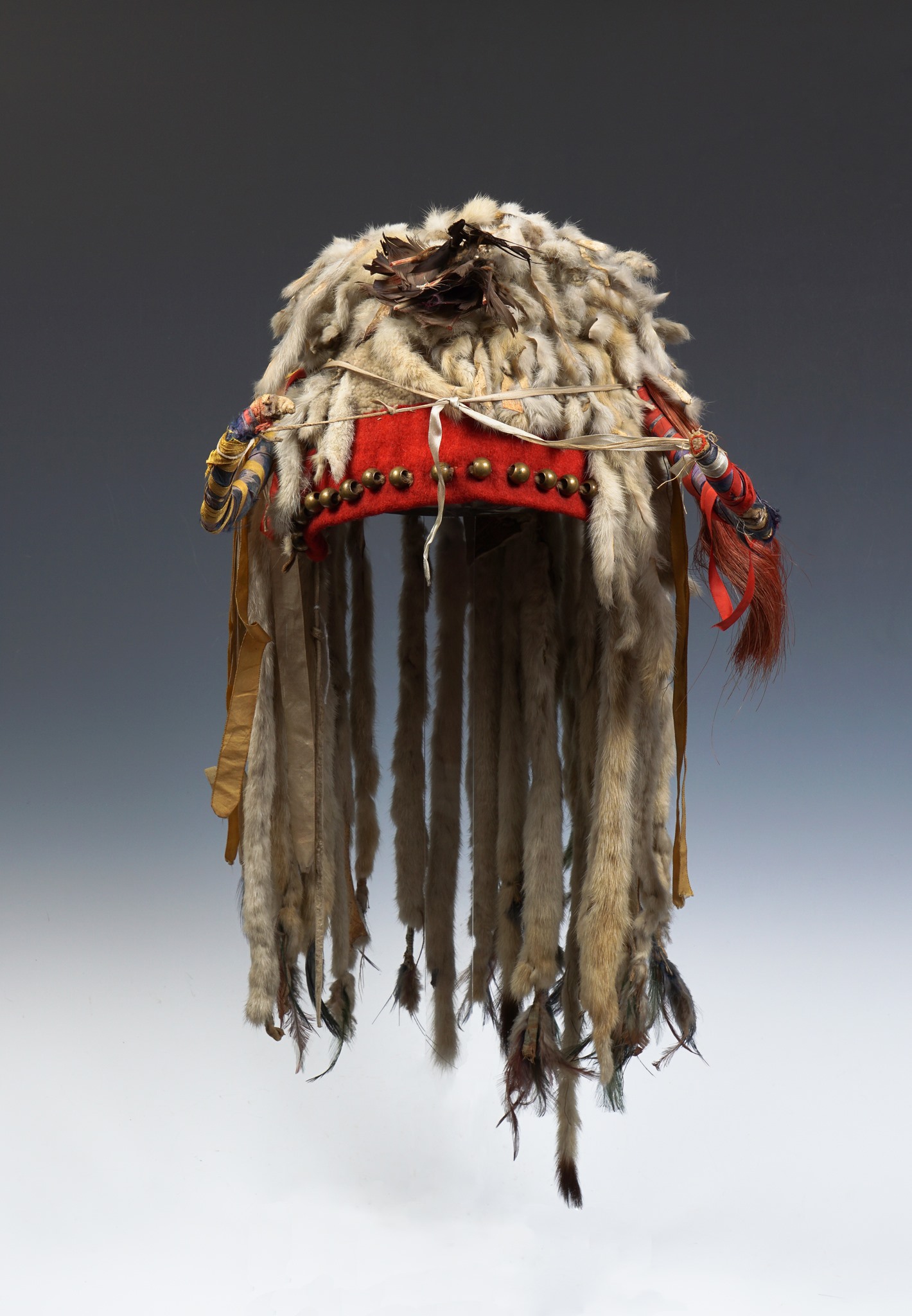Museum Monday is a weekly series where the museum of the month will highlight a different artifact from their collection.

Many associate Native American headdresses with the long “war bonnets” that are made from eagle feathers. This Blackfeet example represents a headdress form called horned bonnets, fashioned from mountain sheep and ermine fur, dyed horse hair and horn. The brow is red trade cloth with brass shoe buttons. Horns are perched on the each side, which are covered with silk ribbons and dyed horse hair drop. The entire headdress measures 24″ in length. The men who wore these bonnets evoked the ermine, or winter weasels, known to be fierce and courageous fighters. This headdress is important in representing alternative forms of Native American culture outside of the generalized headdress form as seen in popular media.
Blackfeet territory stretched from south Canada through Montana and Yellowstone National Park. They once lived a nomadic life hunting bison herds. Once horses were introduced to the people, their territory expanded and their population grew to an estimated 15,000 across the Northern Plains. Their warriors challenged and drove out other tribes who encountered them on their territory. Apart from one incident, encounters with explorers who wandered through were largely peaceful.
Additional information about the Blackfeet Nation is available here.
ABOUT THE MUSEUM

The Museum of Native American History reopened to the public April 2 after being closed for more than a year. MONAH is now open from 10 a.m. to 4 p.m. Wednesday through Saturday. Visitors must reserve free, timed tickets in advance and follow COVID-19 safety protocols. MONAH is located at 202 SW O Street in Bentonville, Arkansas.

